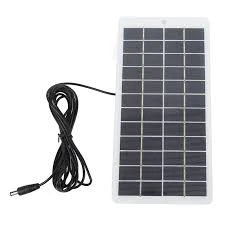Types of Solar Inverters
Types of Solar Inverters
Solar inverters play a crucial role in a solar power system, converting the direct current (DC) generated by solar panels into alternating current (AC), which can be used by home appliances or fed back into the electrical grid. These devices are instrumental in maximizing energy efficiency and ensuring the optimal performance of solar energy systems. In this article, we will explore the primary types of solar inverters, highlighting their unique features and applications.
1. String Inverters
String inverters are the most commonly used solar inverters, especially in residential installations. They connect a series of solar panels—referred to as a string—to a single inverter. While string inverters are cost-effective and straightforward to install, they have a significant drawback the performance of the entire string can be affected by the shading or malfunction of just one panel. Nevertheless, advancements in technology have made many string inverters more efficient at managing partial shading issues.
Microinverters, in contrast to string inverters, are installed on each individual solar panel. This design allows for maximum energy harvesting from each panel because it optimizes performance based on varying conditions, such as shading or dirt accumulation. Microinverters typically offer greater efficiency and reliability than string inverters, particularly in systems installed in shaded or complex environments. Their modular nature allows for easy scalability as users can add panels one at a time without the need for a complete system overhaul.
3. Power Line Communication (PLC) Inverters
types of solar inverter

PLC inverters leverage power line communication technology to transmit data over the existing electrical wiring. These inverters can communicate performance data and system status without the need for additional wiring. PLC inverters are increasingly popular for their ability to simplify installation and maintenance, making them an attractive option for both residential and commercial users.
4. Central Inverters
Central inverters are predominantly used in large-scale solar power plants. They connect many solar panels together into a single unit known as a central inverter station. This type of inverter is efficient for large installations and typically provides robust performance and high reliability. However, any failure of the central inverter can result in significant downtime and production loss, thus necessitating a strong maintenance and monitoring plan.
5. Hybrid Inverters
Hybrid inverters combine the features of grid-tied and off-grid systems, allowing users to maximize their solar energy usage. They can manage power sources, including solar panels, batteries, and the electric grid. This capability is particularly advantageous for those looking to achieve energy independence by storing solar energy for use during periods of low sunlight or power outages.
Conclusion
Choosing the right type of solar inverter is essential for optimizing the performance of a solar energy system. By understanding the different options available—string inverters, microinverters, PLC inverters, central inverters, and hybrid inverters—users can make informed decisions that best meet their energy needs and installation circumstances, ultimately contributing to a sustainable energy future.
-
Understanding the Advantages of Solar String Inverters for Your Energy SystemNewsApr.29,2025
-
Choosing the Right PV Inverter: A Comprehensive GuideNewsApr.29,2025
-
The Future of Solar Power: Exploring Bifacial Solar PanelsNewsApr.29,2025
-
The Complete Guide to Solar Panels: Efficiency, Cost, And InstallationNewsApr.29,2025
-
The Best Options for Efficiency and Cost-EffectivenessNewsApr.29,2025
-
Harnessing the Power of Off-Grid Solar Inverters for Energy IndependenceNewsApr.29,2025







